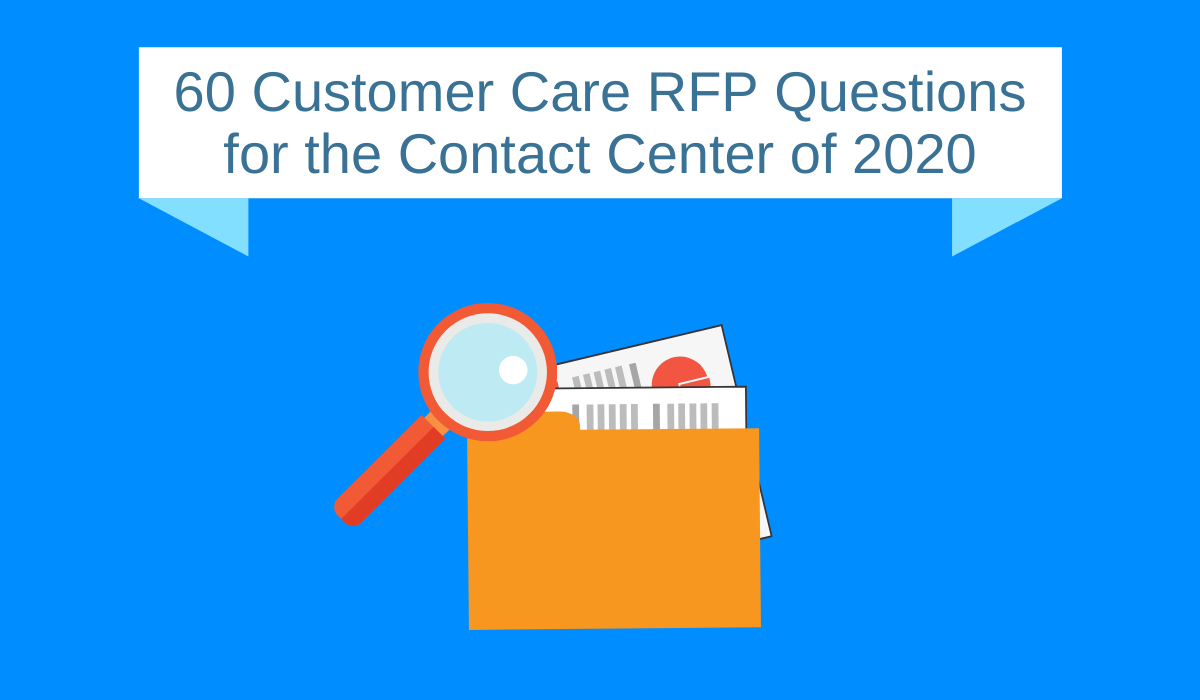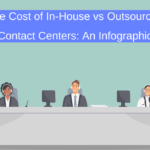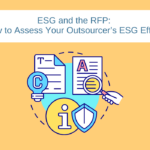60 Customer Care RFP Questions for the Contact Center of Today

2020 marked the workplace like no other year in recent history. For more than two years, everyone worked to settle into new patterns of working and communicating, and we’re finally seeing a return to “normal.” We rejoiced when our favorite coffee shops re-opened, and we got all dressed up again when the commute to work once again involved more than a walk down the hall … and yes, that RFP was finally back on your plate. If you’re faced with the decision to find a new customer care outsourcer in the post-pandemic era, now’s the time to dive in.
Whether you already have an RFP template on hand or not, there are two key things to remember: First, the partnership with your customer care outsourcer is a unique one, requiring customized questions for a more accurate assessment. And second, there’s no doubt that the pandemic and the social justice movement have evolved what you need from a customer service provider – and your RFP should reflect that.
Our updated list of customer care RFP questions keeps these facts top of mind. We hope they’ll make your life a little easier.
Company Overview
The first pages of your RFP will always be the “get to know you” section. You want to find out the history and organization of a vendor to establish a foundation for their capacity to deliver on the scope and become a long-term partner.
-
- List Company Facts
- How long have you been in business?
- How many full-time employees do you have?
- How many physical centers do you operate? (List address & number of employees for each location)
- What percent of your workforce is remote/work-at-home?
- What languages do you currently support?
- What awards or recognition has your company received in the past three years?
- Client Service
- What is the average length of your client relationships?
- Name your five largest clients, and list how long they have been clients.
- What percent of total annual revenue comes from your two largest clients?
- Do you serve any clients who would be considered a competitor to our company?
- Culture
- Describe your corporate culture including how it is differentiated from your competition.
- What is your mission statement and company values?
- How does your corporate culture align with your understanding of our own company, values, and culture?
- How have you worked to maintain culture despite remote and/or physically distanced work environments?
- What are you doing to promote diversity and inclusion within your organization?
Agent Hiring/Training
An outsourcer’s ability to attract and retain the right people for your brand and your service requirements is essential.
-
- Labor Market
- Describe your labor market including post-secondary education rates and unemployment rates.
- Describe your company’s competitive differentiators within your labor market.
- Outline your attraction and recruitment strategies and processes including how your organization approached recruiting in the time of COVID.
- Agent Training
- Describe your training structure (team, facilities, Learning Management Systems, remote platforms, etc.) and outline approach to new hire training.
- What is unique about your agent training regimen?
- What’s your maximum class training size for in-person training? For remote training?
- What percentage of new hires graduate from training to production?
- What percentage of agents are still with the company six months after graduating from training?
- How have you evolved your training program to accommodate remote and/or physically distanced work environments?
- How do your success ratios differ in remote work circumstances?
- What ongoing developmental or career development training do you offer?
Agent Engagement
-
- What is your annual agent attrition rate companywide (list both voluntary and involuntary turnover numbers)? What are the attrition rates for the program that most resembles our requirements?
- Describe your employee engagement strategies and measurement processes.
- How have your employee engagement strategies evolved to support remote and/or physically distanced work environments?
- What percentage of your new hires comes from employee referrals?
- What is your average tenure of salaried staff? Hourly staff?
- Agent Profile
- How do you profile your agents and assess skills?
- What percent of agents have some post-secondary education?
Reporting
Your customer care program may accumulate more data than any other part of your organization. Find out which vendors stick to standard call measures (AHT, ASA, FCR) and which goes the extra mile to provide business insight and analysis that will help you make informed business decisions.
-
- Capabilities and Experience in Information Services
- Describe your information services team including number of personnel, specializations.
- Provide an example of how you have used reporting to positively impact a client’s business.
- What is your system/process for alerting clients on issues beyond established tolerance (i.e., 150% over forecast in a certain interval)?
- What reports form the foundation of your quarterly business reviews?
- Who on your management team reviews client reports on a regular basis?
- Reporting Customization and Client Access
- What custom reporting capabilities do you have?
- How do your clients access reporting in real-time or near real-time?
- Provide examples of standard and custom reporting.
Project Management
Who will you be interfacing with once you’ve partnered up with an outsourcer? Now’s the time to ensure you will have the right make up of project management resources to sync up with your own internal team.
- Team Commitment
- What percentage of the project manager(s)’s time will be dedicated to our project?
- Provide an organization chart and bios of senior leadership and program managers.
- What members of senior management are located on the same site as the location proposed for our program?
- Describe your governance model including detail on senior management involvement on our account.
- How did you evolve your client relationship management process during the pandemic?
Again, think about what’s important to you. For example, if relationship management has been a struggle with your current provider, you’ll want to make sure you understand how a new partner might offer something more aligned with your expectations. And on the flipside, if you’re a first-time outsourcer, you’ll want to understand how the client/outsourcer relationship will be managed, what you can expect from your partner, and what they will expect of you.
Technology
A vendor’s technology stack is the make-or-break factor in their capacity to pivot and adapt to situations like the recent pandemic. You need to get the full picture of their everyday technology capabilities and integrations – as well as their business continuity and redundancy plans.
-
- Tech Compatibility
- Describe your telephony platform and your integration capabilities for our CRM/CTI systems.
- Detail your business continuity plans and redundancy practices.
- How do you support the remote and/or physically distanced work environment from a technology perspective?
- What options do you provide to clients for program-specific redundancy or contingency plans? (Provide details on which options are included in your pricing model.)
- Detail your ability to pivot from an in-office solution to a primarily remote solution and vice versa from a technology perspective.
Pricing
Contact center pricing models vary from vendor to vendor. It’s easier to get an apples-to-apples comparison when providing specific scenarios (i.e. call volume) using the economic model you prefer, such as cost per call, cost per minute, cost per headcount, etc.
- Pricing Models
- Detail one-time costs associated with startup.
- What is the estimated annual cost of the solution detailed in your proposal?
- Detail your pricing model by channel using the volumes and SLAs provided in this RFP.
- What services and features are included in this pricing? Include team/project management resources as well as technology and reporting.
- What performance guarantees are included in this pricing?
- Are there any volume discounts you can provide?
- Are long-distance costs included, if no, please detail how direct costs are billed?
- Describe any risk/reward bonus-penalty structure you offer.
- If you were to suggest an alternative pricing model within the same volume parameters as the scenario provided, what would you suggest?
Being able to accurately compare one bidder’s offering to another is the key here – how the bidder reached the number they are presenting is as important as the number itself. Always ask for a breakdown of their pricing and note features and services that one vendor may offer over another. As much as possible, you want a true comparison so you can make an accurate, fair evaluation.
![The 10 Most Important Contact Center RFP Questions [Infographic]](https://blueocean.ca/wp-content/uploads/2019/09/Blue-Ocean-Blog-9-10-19-150x150.png)


